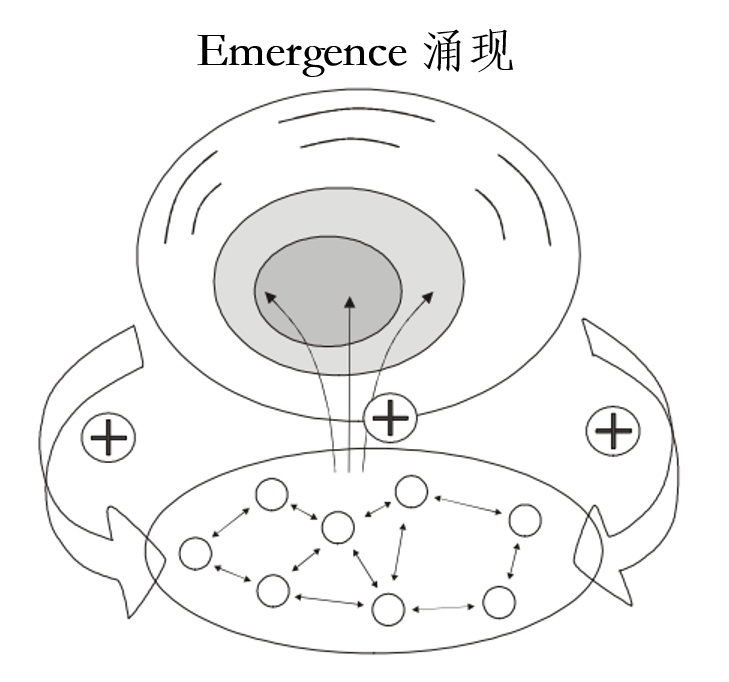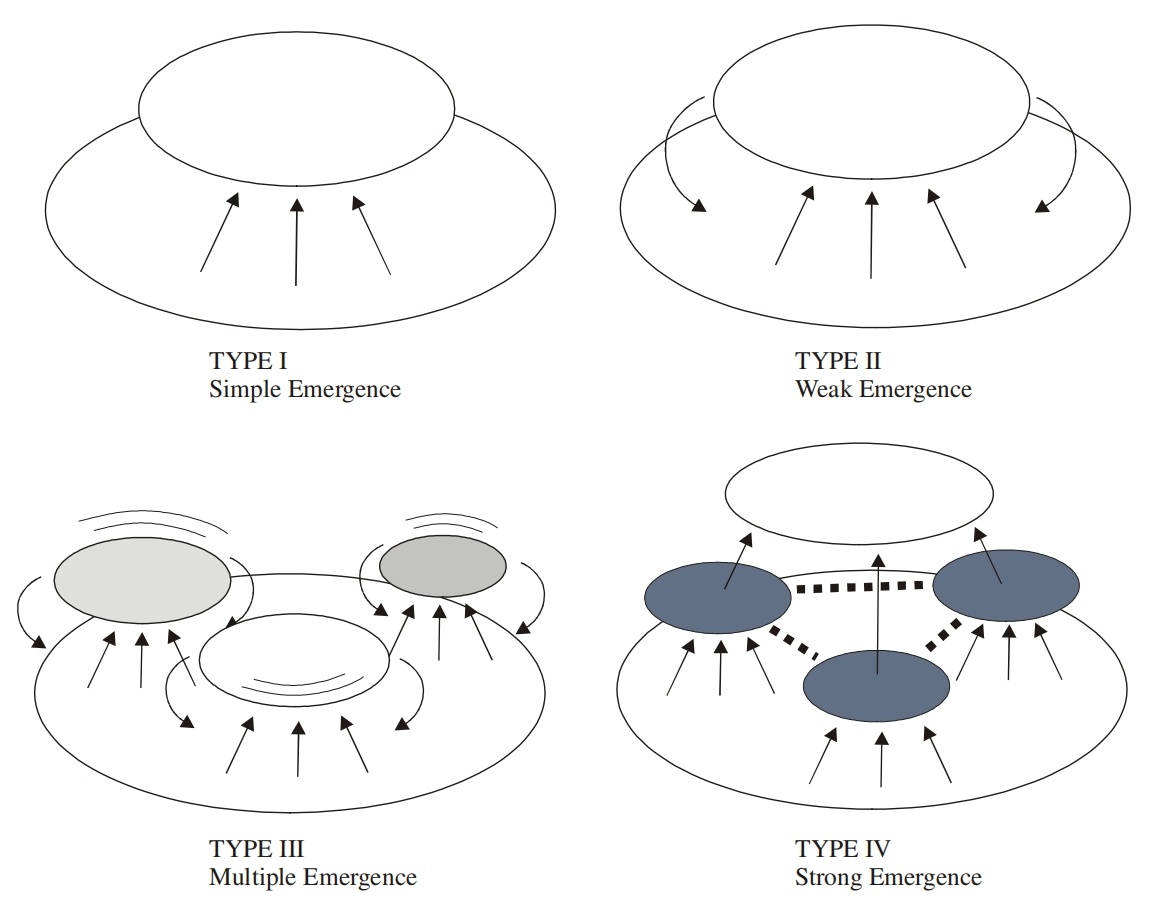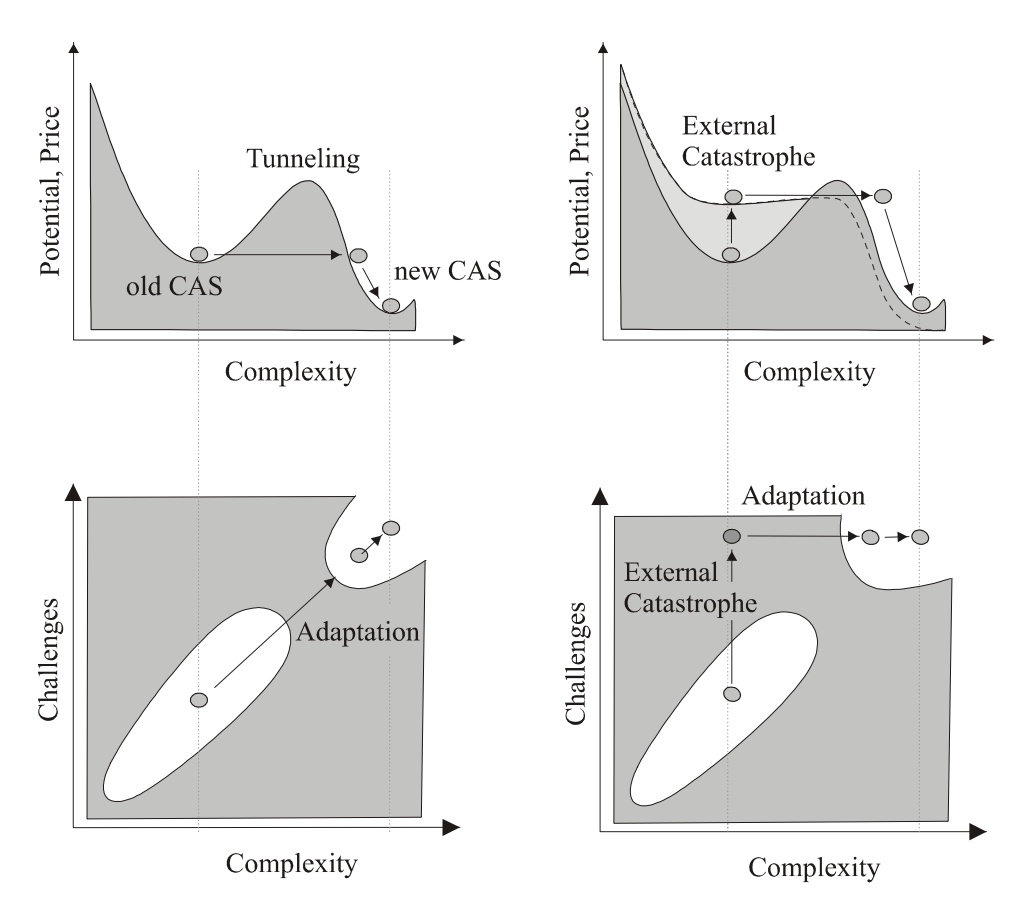Emergence - The Key Role in Systems Thinking



1. Definition and Core Paradox of Emergence
Definition: Emergence refers to properties that arise at a higher level of a system, which cannot be deduced or reduced from the individual characteristics of its basic elements. For example, life is an emergent property of gene interactions.
Paradox: Emergent properties possess both persistence and dynamism (e.g., the stable formation of a flock of birds despite individual changes), as well as dependence and independence (they depend on the system but are partially independent of microscopic elements).
2. Classification Framework for Emergence
Emergence is classified into four types based on feedback mechanisms and causal relationships, each containing subtypes:
I. Simple Emergence (No Top-Down Feedback)
Ia (Intentional Emergence): Human-designed systems (e.g., machines, software) with clear and predictable functions but lacking flexibility. Examples: clock functions, code semantics.
Ib (Unintentional Emergence): Emergence of statistical average properties (e.g., gas pressure, network characteristics), dependent on relationships between elements but without feedback.
II. Weak Emergence (With Simple Feedback)
IIa (Stable): Dominated by negative feedback, forming stable patterns. Examples: ant foraging, bird flock behavior, market economy supply-demand balance.
IIb (Unstable): Positive feedback leads to short-term explosive phenomena. Examples: stock market bubbles, fashion trends, social media hotspots.
III. Multiple Emergence (Complex Feedback and Adaptability)
IIIa (Pattern Formation): Combination of positive and negative feedback, generating complex patterns. Examples: animal fur patterns, reaction-diffusion systems, cellular automata (e.g., "Conway's Game of Life").
IIIb (Adaptive Emergence): Systemic breakthroughs overcoming barriers, such as significant transitions in evolution. Examples: ecosystem evolution, scientific paradigm shifts.
IV. Strong Emergence (Irreducible New Systems)
New hierarchical systems completely independent of underlying rules, such as life based on genes, culture based on language. This type of emergence crosses the "correlation barrier," where microscopic details do not affect macroscopic behavior. Examples: the origin of life, the evolution of language.
3. Basis and Significance of Classification
Feedback Mechanism: From no feedback (Type I) to multiple feedbacks (Type III), ultimately to transcendent systems (Type IV).
Predictability: Type I is fully predictable, Type II is predictable in principle, Type III is chaotic and unpredictable, Type IV is unpredictable due to new laws.
Philosophical Relevance: Strong emergence is related to "supervenience," where higher-level properties depend on but are independent of the lower level.
4. Applications and Insights
Engineering and Science: Understanding emergence helps design robust systems (e.g., coping with unpredictable failures), and optimize collective intelligence (e.g., distributed algorithms).
Evolution and Innovation: Emergence explains breakthrough evolution in complex systems like life and culture, emphasizing the catalytic role of environmental mutations (e.g., disasters) in innovation.